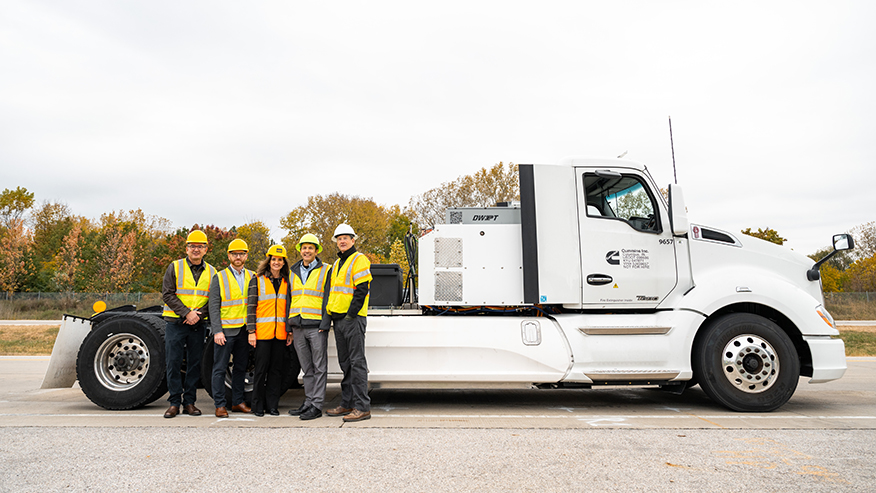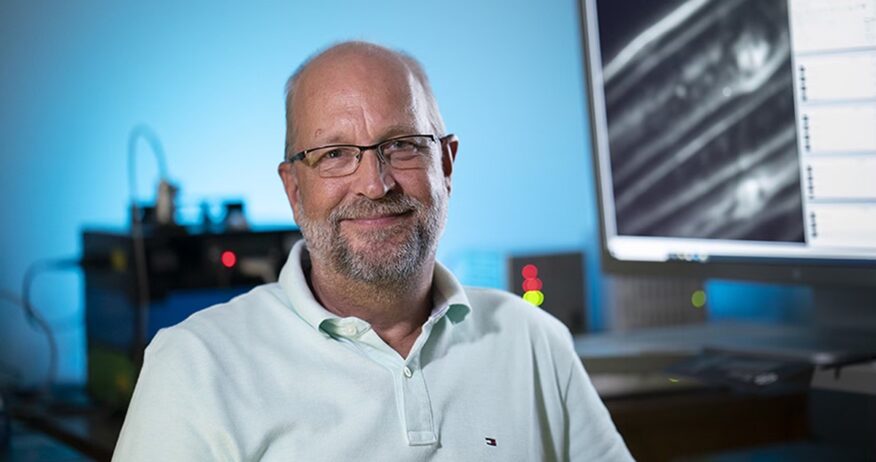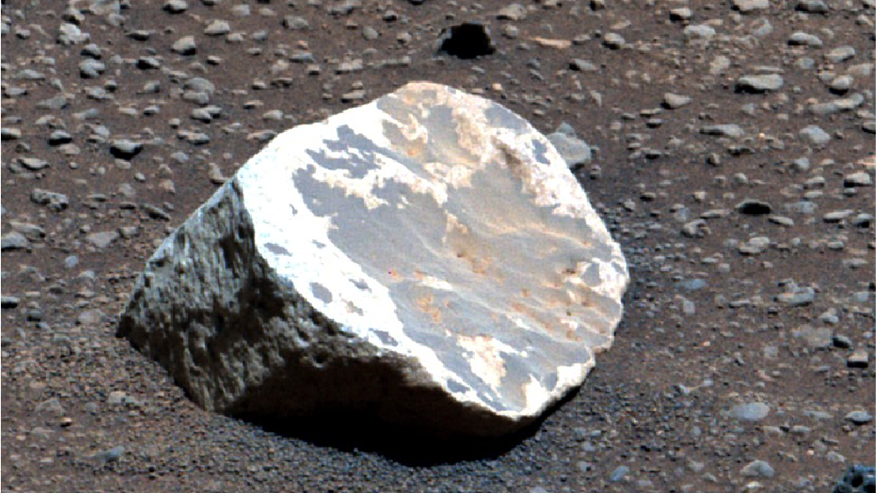The key to fighting viruses: Understanding their structure is vital to unlock a healthy future for humanity
New grant co-led by Purdue University researcher takes aim at vaccines for emerging tick- and mosquito-borne viruses, including West Nile and dengue fever
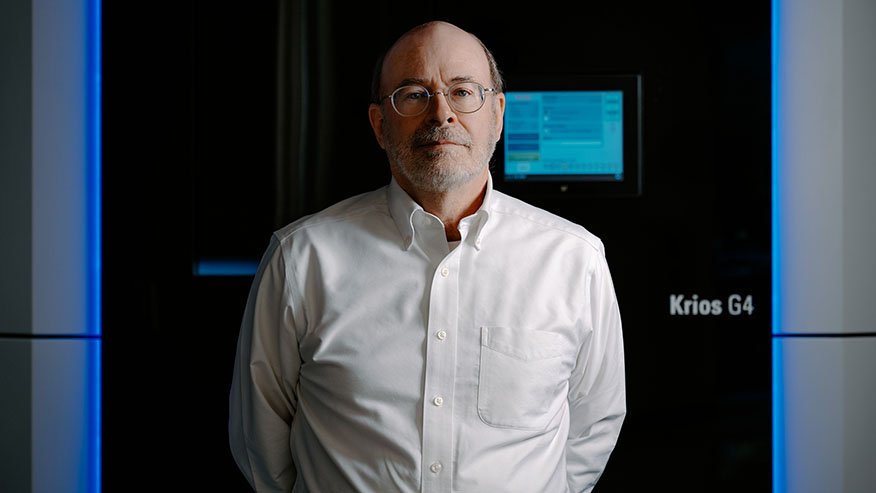
Richard Kuhn, a molecular virologist at Purdue University, co-leads a $46 million grant from the National Institutes of Health aimed at mapping out virus vaccines ahead of potential pandemics. (Purdue University photo/Kelsey Lefever)
WEST LAFAYETTE, Ind. — One of the first things the general of any army does before a battle is scout the terrain. Without seeing and understanding the battlefield, the issues of tactics, strategy and supply are moot.
It’s the same when doctors, researchers and epidemiologists fight any virus: The physical structure of its molecules dictate how a virus infects people and moves through their bodies as well as how to formulate effective vaccines and treatments.
That physical structure is precisely the expertise of molecular virologist Richard Kuhn, the Trent and Judith Anderson Distinguished Professor of Science in Purdue University’s College of Science and the Krenicki Family Director of the Purdue Institute of Inflammation, Immunology and Infectious Disease. He is harnessing that expertise in partnership with a new multicenter grant from the National Institute of Allergy and Infectious Diseases (NIAID) of the National Institutes of Health (NIH). The effort, led by viral expert Michael Diamond of the Washington University School of Medicine in St. Louis, alongside Kuhn, is part of NIAID’s new Research and Development of Vaccines and Monoclonal Antibodies for Pandemic Preparedness (ReVAMPP) network.
“The core of what we do is to analyze and study the structures of viruses and antibodies,” Kuhn said. “We are working to understand what the important features of an antibody are that makes it effective at neutralizing — blocking — the virus.”
As part of the team in 2017 that mapped the structure of a human antibody that could potently block the Zika virus, as well as the recipient of this major grant from NIAIAD, Kuhn is one of the foremost scouts in the fight against viral diseases.
Viral threats: Tiny entities, big problems
A virus is, arguably, the smallest possible living thing. It is a bundle of DNA or RNA bound up in a minuscule core, sometimes surrounded by a sturdy envelope and sometimes not. It can reproduce, but not by itself. It relies on an outside partner to reproduce: a plant, animal or even a fungus.
In his lab in Purdue’s Department of Biological Sciences, Kuhn studies specifically RNA viruses, particularly those spread by mosquitoes and ticks, including alphaviruses like chikungunya and eastern equine encephalitis, and flaviviruses like Zika, dengue fever, West Nile and yellow fever. His research involves studying the structure of viruses and how they interface with the cells of their hosts’ bodies — hence the mapping of the Zika antibodies.
That structural understanding is key to being able to create vaccines and treatments for viruses.
“With the experience during the pandemic, there is more of a focus on viruses globally,” Kuhn said. “Since the 1970s, at least, there has been a steady stream of known and emerging viruses, including HIV, Ebola and, of course, influenza comes back every year, sometimes with significant effect.”
As climate change increases temperatures and the world becomes more global and interconnected, viruses become more prevalent and have vastly more opportunities to mutate and jump from animal to human hosts. As such, many tick- and mosquito-borne diseases like the ones Kuhn studies are becoming more of an outbreak risk.
The SARS-CoV-2 virus, the cause of the COVID-19 pandemic, is a coronavirus. Before the emergence of SARS-CoV-2, doctors and researchers were already familiar with other coronaviruses and were well on their way to understanding how to build a vaccine for COVID-19. That’s in part why research teams were able to develop effective vaccines so quickly. But all sorts of viruses cause outbreaks and epidemics — not just coronaviruses. Flaviviruses, carried by ticks and mosquitoes, might very well be among the next epidemics humanity faces.
“Despite all the human tragedy, SARS-CoV-2 was a relatively simple target in terms of quickly developing a very effective vaccine,” Kuhn said. “There were features of the virus that made developing a vaccine relatively easy. The next pandemic may not be like that. It’s not going to be like in the movie ‘Contagion,’ where they develop a vaccine in two weeks. The more work we can do now, the more it will pay off in case of a novel pandemic.”
Antibodies assemble: Grant brings together dream team of experts
Kuhn is co-lead of the Flavivirus and Alphavirus ReVAMPP (FLARE) grant, which will help direct efforts to understand the physical dynamics of flaviviruses and alphaviruses in preparation for a potential pandemic.
They may not be crossing the bridge before they come to it, but they’re certainly amassing the timbers and bolts and drawing up the plans.
“The whole idea here is to understand what we need to do in order to develop a vaccine against known and unknown viruses in this group,” Kuhn said. “We are not developing any specific vaccine for any one virus; we are developing platforms so that when the next virus comes along, we’ll be able to rapidly develop an effective vaccine for it.”
FLARE incorporates researchers from 16 other academic institutions alongside Purdue and WashU Medicine, as well as industry partners. They are studying five viruses that represent the major subgroups of flaviviruses and alphaviruses, including West Nile, tick-borne encephalitis, dengue, chikungunya and Venezuelan equine encephalitis viruses.
Multiple teams of experts are targeting the viruses from a range of angles to convene on the most efficient and effective solutions. Teams are working on traditional vaccine delivery systems, as well as mRNA vaccines, nanoparticle-based vaccines and antibody-based treatments.
“That’s one of the beauties of science today — it’s not one scientist in a lab working alone,” Kuhn said. “It’s an amazing network of hundreds of people across the country working in a coordinated way. I think that’s one of the exciting things about this award. It brings experts from all over the place. All of the leaders in the field are involved in this grant.”
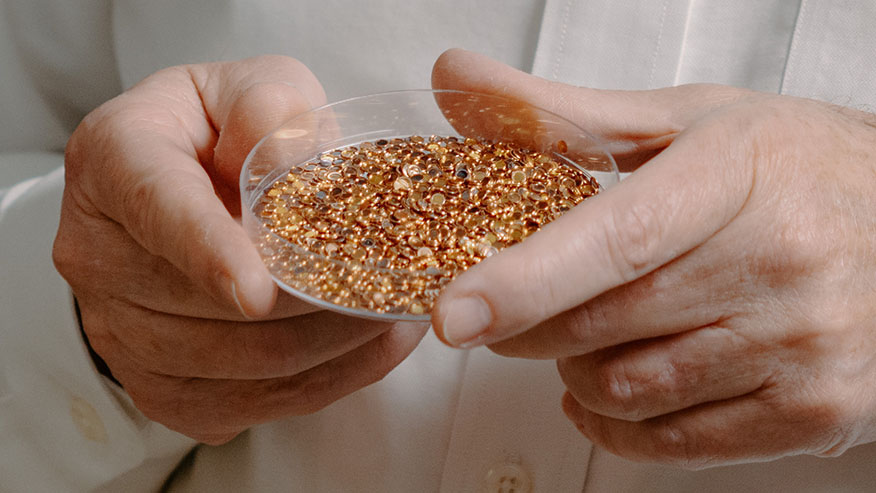
Unlocking vaccines: Better tools bring faster solutions
As well as being co-lead over the full grant, Kuhn also heads up one of the grant’s main goals, or cores: that of the structural biology of the antibodies and viruses themselves. Increasing resolution in microscopes and other tools allows scientists to better see the virus and more rapidly identify possible routes for vaccines and treatments.
“If we take dengue virus, a very important human pathogen that affects up to 400 million people a year, there are certain features on the virus surface that antibodies like to recognize to prevent virus infections,” Kuhn said. “Even if we have an unknown virus of the same group, we can predict where the same type of residues are going to be and computationally design an antibody around that.”
Kuhn’s team is using AI as well as increased abilities to visualize viruses to pinpoint the most effective and efficient routes for vaccines. Just as the resolutions of modern telescopes, like the James Webb Space Telescope, are allowing astronomers to peer ever more deeply and clearly into space, the tools to look at small things are improving. The increased resolution means that rather than guessing, scientists can quickly see and theorize what parts of the virus to target, drastically decreasing the amount of time it takes to address a viral infection.
“We are using the most modern tools and a team of the best experts to understand how the human immune system can be primed and targeted for the fastest, most effective response against viral pathogens,” Kuhn said. “Our primary responsibility is to improve human health in the U.S. and the world.”
This work is part of Purdue’s One Health initiative.
About Purdue University
Purdue University is a public research institution demonstrating excellence at scale. Ranked among top 10 public universities and with two colleges in the top four in the United States, Purdue discovers and disseminates knowledge with a quality and at a scale second to none. More than 105,000 students study at Purdue across modalities and locations, including nearly 50,000 in person on the West Lafayette campus. Committed to affordability and accessibility, Purdue’s main campus has frozen tuition 13 years in a row. See how Purdue never stops in the persistent pursuit of the next giant leap — including its first comprehensive urban campus in Indianapolis, the Mitch Daniels School of Business, Purdue Computes and the One Health initiative — at https://www.purdue.edu/president/strategic-initiatives.
Media contact: Brittany Steff, bsteff@purdue.edu

